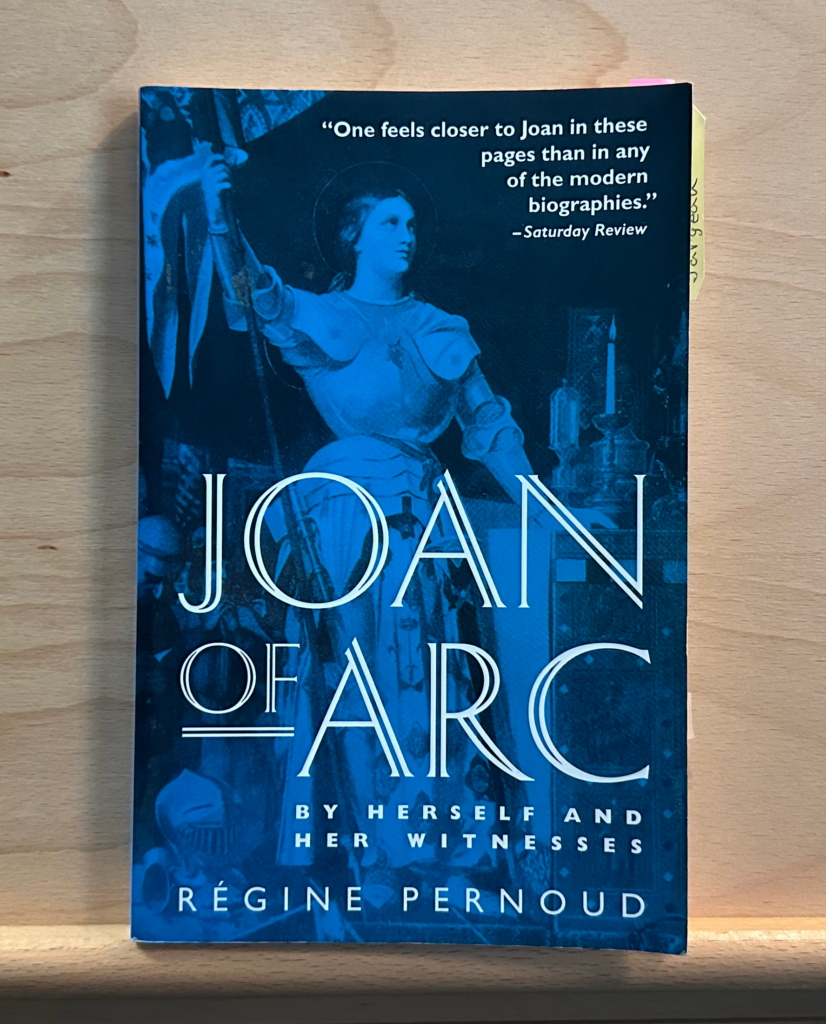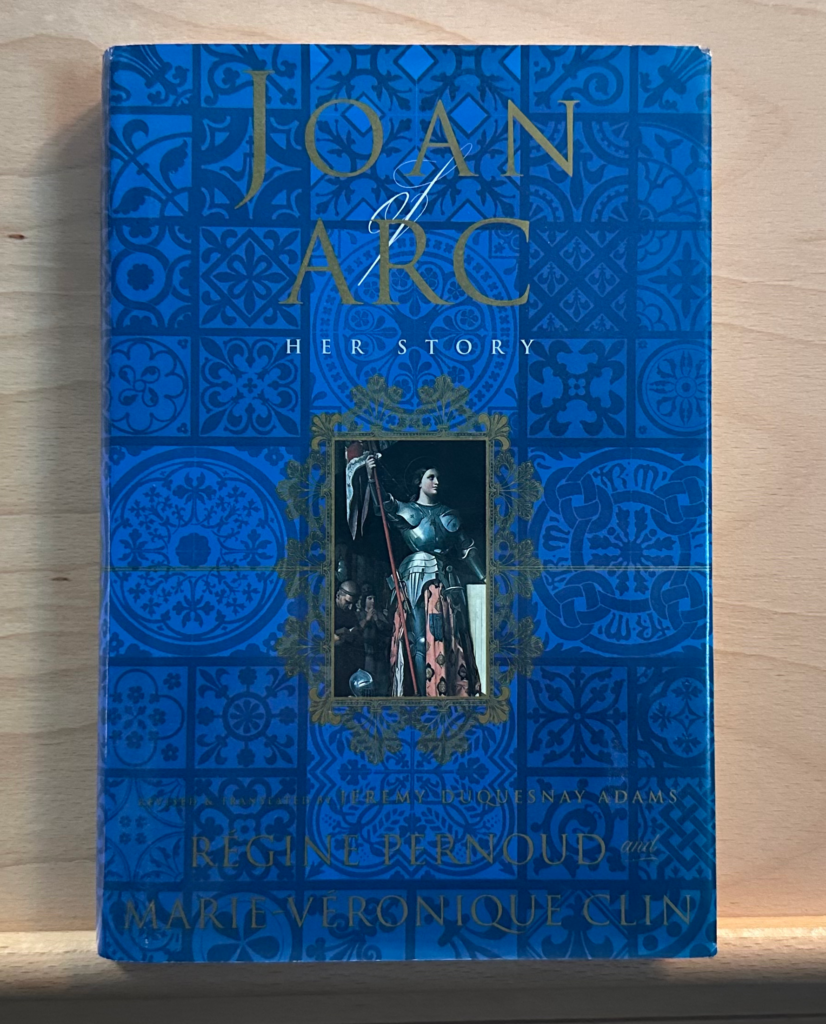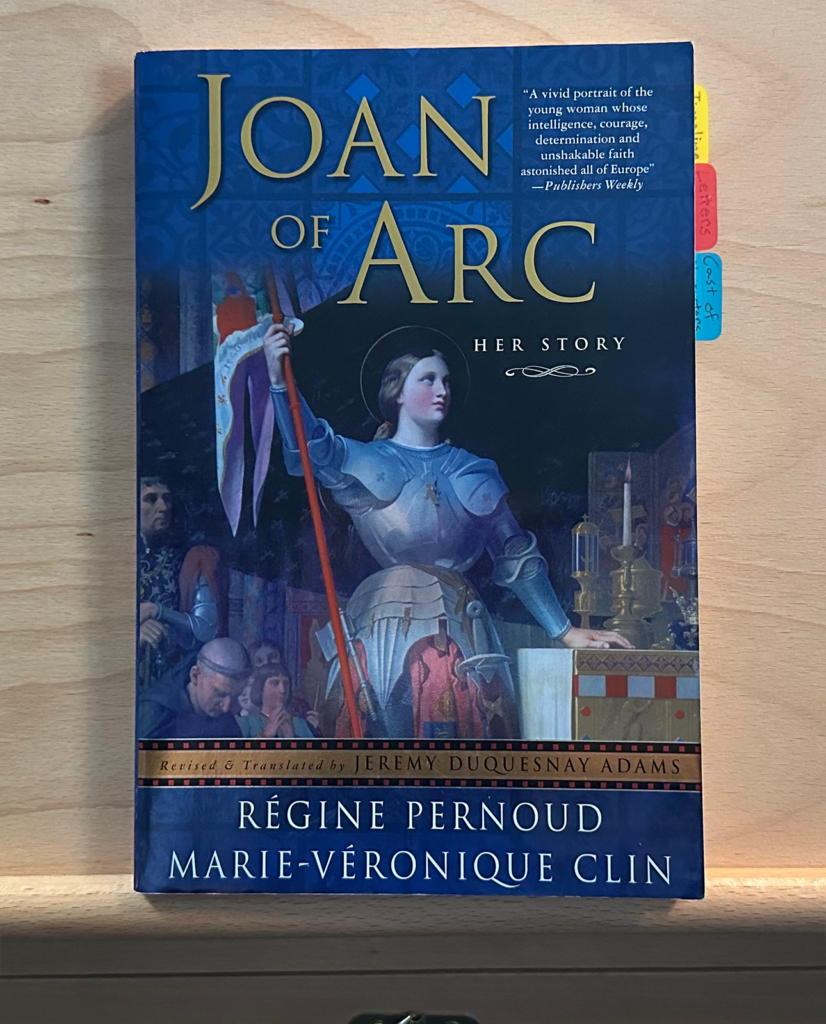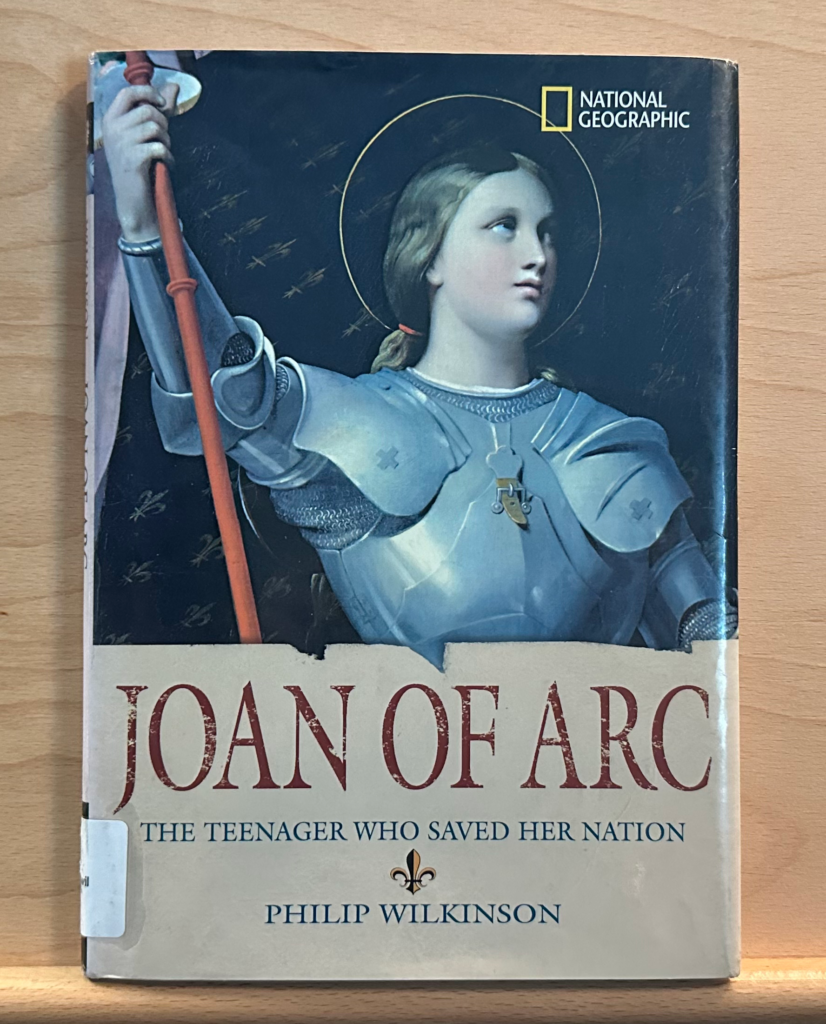One of the most common inspirations I’ve seen for Joan of Arc book covers is Jean-Auguste-Dominique Ingres’s 1854 painting entitled Jeanne d’Arc au sacre du roi Charles VII, dans la cathédrale de Reims (Joan of Arc at the coronation of King Charles VII, in the Reims Cathedral).
This piece is displayed prominently at the Louvre along with numerous other famous works.

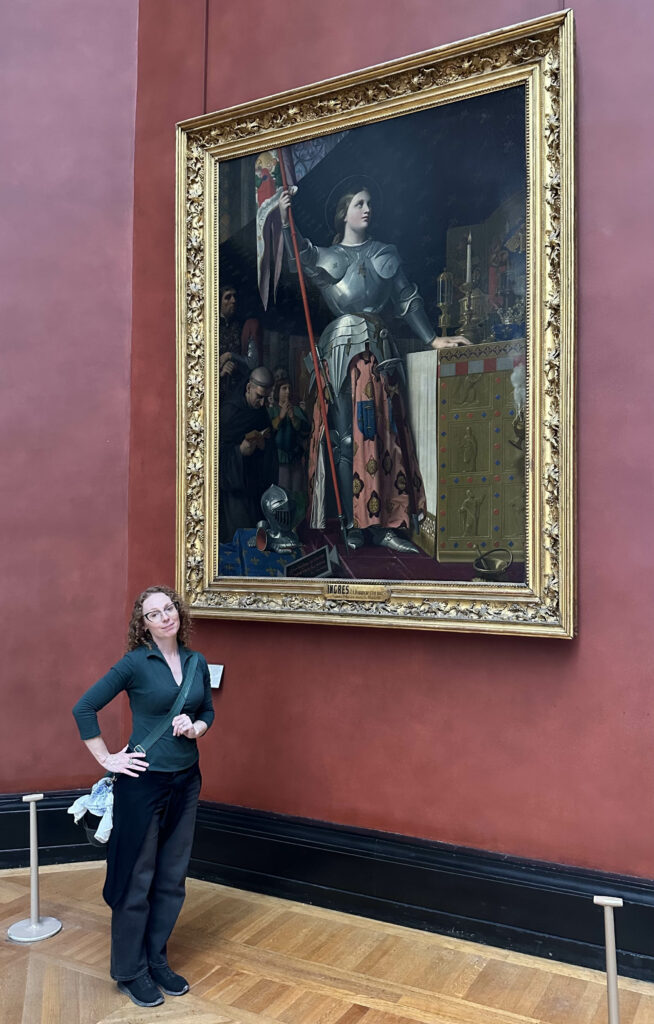
The painting is large, measuring 7.9′ x 5.8′ (2.4m x 1.78m), without the frame. The whole piece weighs 168 lbs. Joan is larger than life at this scale.
As Nora Heimann points out, although some writers had emphasized Joan of Arc’s holiness and even ventured to refer to her as a saint, this painting marked the first time she was depicted with a halo in visual arts. This painting was well before Joan’s official canonization in 1920, and it was before the cause for canonization was first presented to the Vatican in 1869.
Ingres left some Easter eggs in the painting. In the background, he depicts both Jean Pasquerel and Jean d’Aulon, and a younger version of Ingres himself (he was about 75 at the time of this painting).
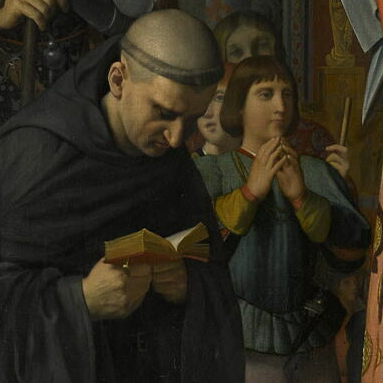
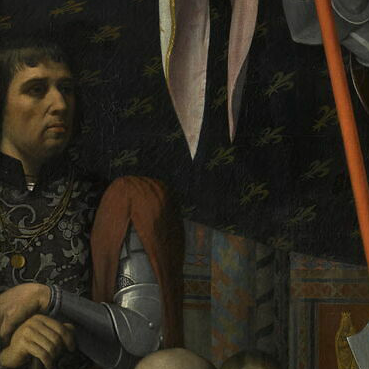
Jean d’Aulon is depicted far too young, as he would have been 39 years old at the time Charles was coronated at Reims.
1854 was not the first time Ingres depicted Joan of Arc at Reims. Around 1846, he produced an etching for the 2nd edition of Edouard Mennechet’s multivolume The French Plutarch (1844-1847). Below is an early sketch and the final version of the etching that appeared in the book.
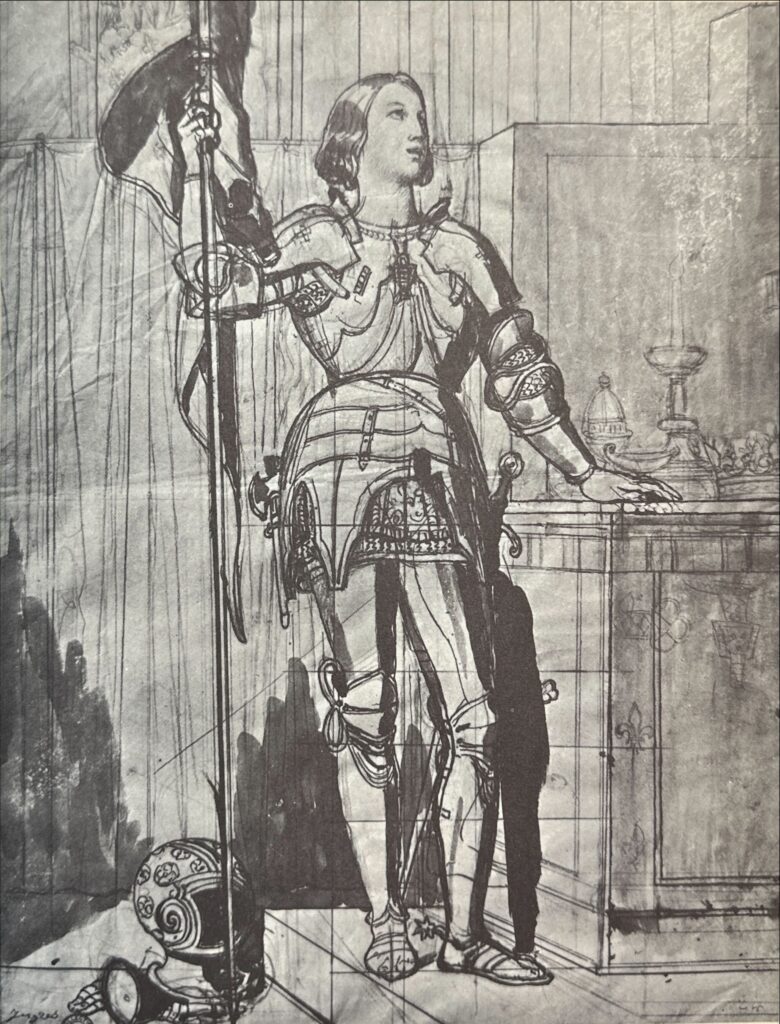

One of the big differences pointed out by Nora Heimann is that although Ingres depicted Joan with short hair in his earlier work, for his 1854 painting, he gave Joan long hair. The long hair is inaccurate and Heimann believes Ingres knew better.
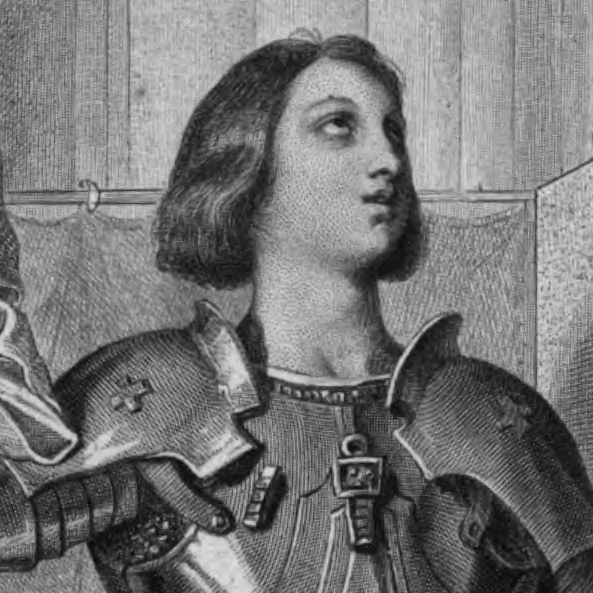

Nora Heimann has also pointed out how Joan’s stance in these images mimics similar stances by Roman statues of gods. In particular, the La Pallas de Velletri (Athena of Velletri) is a Roman replica of a Greek original. Ingres couldn’t have missed this 10-foot tall statue at the Louvre, and he would have encountered multiple statues in similar poses during his time in Rome. The fact that Ingres chose to depict Joan of Arc in a similar pose as an ancient god also reveals his sentiments toward her.
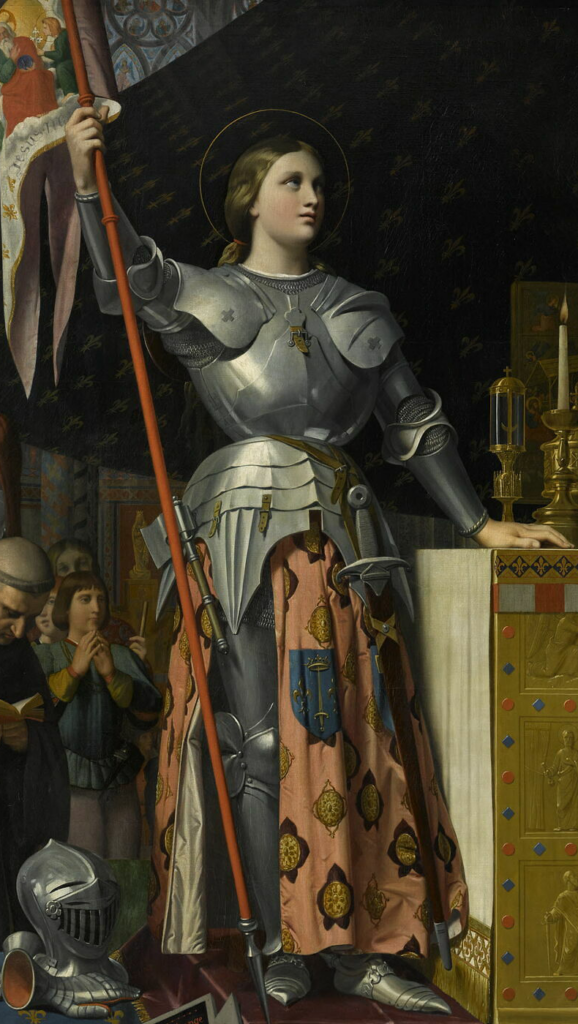

Ingres’s Joan of Arc painting remains a famous one. I have five different Joan of Arc books that use it for a cover, and there are dozens more that at least include the image on the inside.
